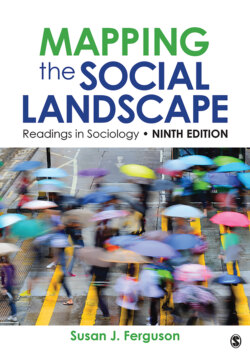Читать книгу Mapping the Social Landscape - Группа авторов - Страница 19
На сайте Литреса книга снята с продажи.
Profile of Chicana Household Workers
ОглавлениеOnly the vaguest statistical data on Chicana private household workers are available; for the most part these workers remain a doubly hidden population. The reasons are themselves instructive. Domestic workers tend to be invisible because paid domestic work has not been one of the occupations recorded in social science surveys, and the U.S. Census Bureau uses a single code lumping together all private household workers, including launderers, cooks, housekeepers, child-care workers, cleaners, and servants. Even when statistics on domestics can be teased out of the census and labor data bases, they are marred by the common practice of underreporting work in the informal sector. Unlike some of the private household workers in the East, Chicana domestics are not unionized and remain outside the “counted” labor force. Many private household workers are not included in the statistics collected by the Department of Labor. The “job” involves an informal labor arrangement made between two people, and in many cases payment is simply a cash transaction that is never recorded with the Internal Revenue Service (IRS).
Governmental undercounting of Chicanos and Mexican immigrants in the United States further adds to the problem of determining the number of Chicanas and Mexicanas employed as private household workers. For many, domestic service is part of the underground economy, and employing undocumented workers is reported neither to the IRS nor to the Immigration and Naturalization Service (INS), thus making another source of statistical information unreliable. Chicanos continue to be an undercounted and obscure population. Problems with the categorization of domestics have been still further complicated by changing identifiers for the Mexican American population: Mexican, Spanish-speaking, Hispanic, Spanish-surnamed, and the like make it impossible to segment out the Chicano population.
The 25 Chicanas whom I interviewed included welfare recipients as well as working-class women, ranging in age from 29 to 68. Thirteen of the 25 women were between 29 and 45 years old. The remaining 12 were over 52 years old. All the women had children, and the older women also had grandchildren. The smallest family consisted of one child, and the largest family had seven children. The average was three children. All but one of the women had been married. Five of the women were single heads of households, two of them were divorced, and the other three were single, separated, or widowed. The married women were currently living with husbands employed in blue-collar positions, such as construction and factory work. At the time of the interview, the women who were single heads of households were financially supporting no more than two children.
Educational backgrounds ranged from no schooling to completion of high school. Six women had completed high school, and seven had no high school experience, including one who had never attended school at all. The remaining 12 had at least a sixth-grade education. Although the least educated were the older women, eight of the women under 42 had not completed high school. The youngest woman with less than an eighth-grade education was 53 years old. The 12 women over 50 averaged eight years of schooling. Three of the high school graduates were in their early thirties, two were in their early forties, and one was 57 years old. Although one woman preferred to be interviewed in Spanish, all the women spoke English.
Work experience as a private household worker ranged from five months to 30 years. Women 50 years and older had worked in the occupation from eight to 30 years, while four of the women between the ages of 33 and 39 had worked as domestics for 12 years. Half of the women had worked for more than 10 years as private household workers. Only three women had worked as domestics prior to marriage; each of these women had worked in live-in situations in rural areas in Colorado. Several years later, after marriage and children, they returned as day workers. All the other women, however, had turned to nonresidential day work in response to a financial crisis; in the majority of cases, it was their first job after marriage and having children. Some of the women remained domestics throughout their lives, but others moved in and out of domestic work. Women who returned to domestic service after having other types of jobs usually did so following a period of unemployment.
The work histories revealed that domestic service was only one of several low-paying, low-status jobs the women had held during their lives. They had been hired aswaitresses, laundresses, janitors, farmworkers, nurse’s aides, fast-food servers, cooks, dishwashers, receptionists, school aides, cashiers, baby-sitters, salesclerks, factory workers, and various types of line workers in poultry farms and car washes. Almost half of the women had worked as janitors in hospitals and office buildings or as hotel maids. About one-fourth of the women had held semiskilled and skilled positions such as beauticians, typists, and medical-record clerks. Six of the women had worked only as domestics.
